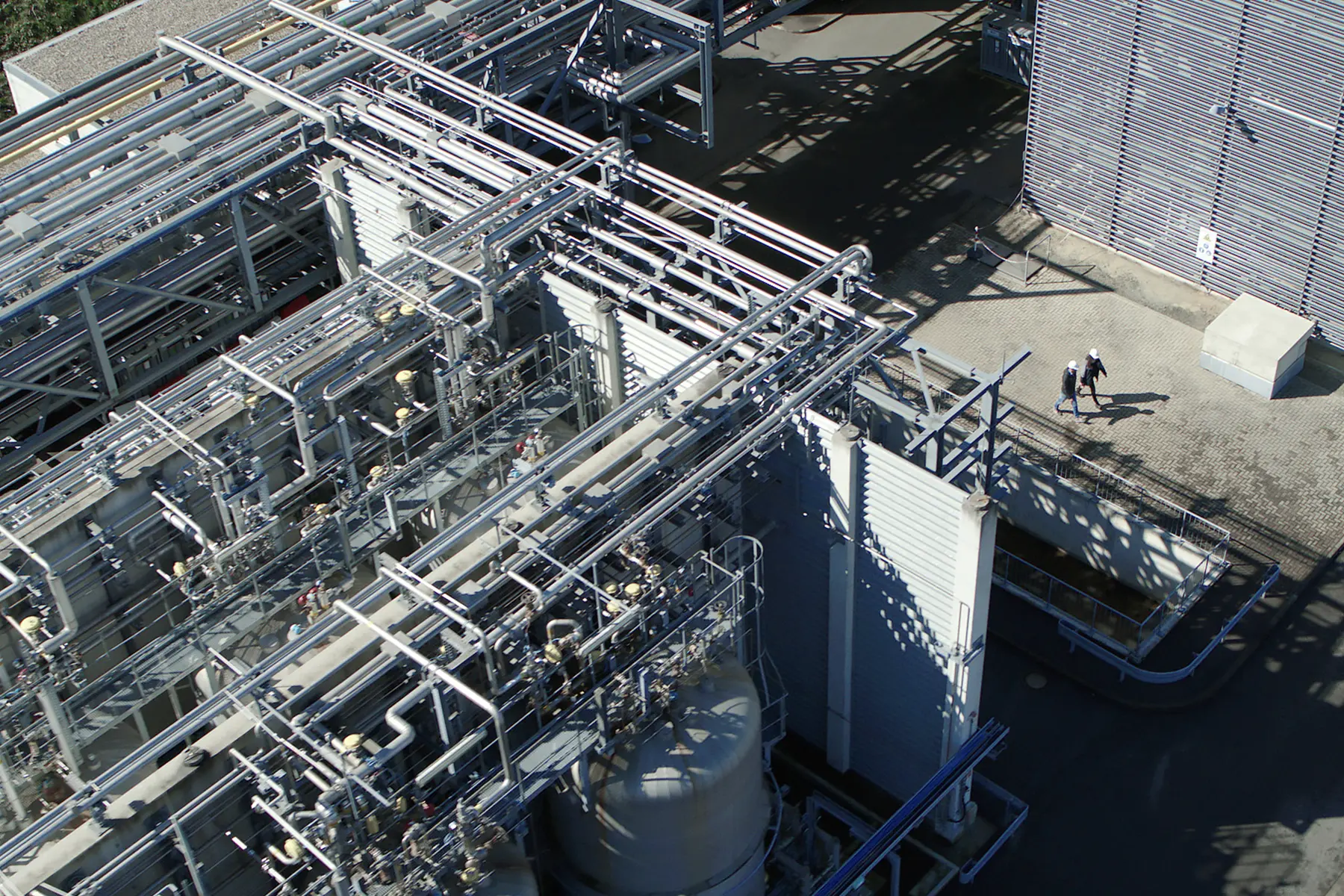Recognized as one of Fast Company’s Most Innovative Companies of 2024, Group14 was notably placed in the Manufacturing category, honoring not only our silicon battery technology, but just as importantly, our approach to delivering new technology at scale.
For automotive and global electronics manufacturers, the scalability of a new technology is as important as the performance of that technology. No company wants to land in the dreaded position of betting on an advantage that later fails to be efficiently and cost-effectively commercialized. Failing to crack the code on manufacturing technology at scale remains one of the primary reasons that so many promising technologies stagnate (and die) in the lab; the products that make it into the hands of consumers, like an iPhone or a Tesla, are the rare exceptions.
Group14 CEO and Co-founder Rick Luebbe recently said, “We need new — and varied — approaches to meet the performance requirements of today’s vehicles and devices. But by far, the hardest challenge for a company is to develop a technology that is not only innovative, but also scalable.”
True Innovation Goes Beyond the Lab
A driver of Group14’s success is our Applied Innovation framework, which has allowed us to scale at the speed and to the extent we have in the past five years. The way we look at it, the Applied Innovation framework combines two parallel paths — product innovation and process innovation — and has become the guiding principle by which Group14 develops its technologies.
When we talk about product innovation, what we mean is the creation of breakthrough technologies with better performance and new advantages that advance products toward their next iteration. Process innovation comes down to creating scalable, sustainable manufacturing processes to ensure our product innovations can be mass-produced at a low cost and made widely available to customers, without relying on rare precursors or niche equipment.
To break it down further, we follow the rule that a successful product is only as good as the ability to produce it at scale.
The Poster Child for Applied Innovation
The easiest way to understand what we mean when we talk about Applied Innovation is through our process of developing SCC55™.
When we started researching the potential of silicon for use in batteries, our goal was to create a scalable, cost-effective solution while meeting — or exceeding — the high-performance characteristics of other rechargeable battery technologies. Some of those early efforts included off-the-shelf silicon, exploring everything from nanopowders to nanowires to microwires, and more. None of it worked. Depending on the feedstock, we could improve the base performance of the silicon, but we quickly saw the typical, rapid degradation of losses within the batteries after a few cycles.
So we took a few steps back. Our early team of engineers locked themselves in a conference room at our Woodinville, Washington offices to do some soul-searching. Then-employee #1 and now-Director of Research and Development, Avery Sakshaug, thought about this challenge in a new way: how do we develop a scalable method for introducing nanosilicon into the pores of carbon without the need for hyper-specialized expensive precursors, and equipment to manufacture it?
That question proved to be instrumental in defining our Applied Innovation approach today. Sakshaug looked high and low for a widely available material, quickly ruling out those that couldn’t scale, due to cost or lack of availability. He eventually landed on silane, which was readily available with a large, existing market supply for the solar and semiconductor industries.
Armed with a whiteboard and tenacity, the team began to develop what would eventually become Scaffold Prime™, the elegantly streamlined process by which we manufacture the SCC55™ we deliver to our customers today. Due in large part to Rick Luebbe and CTO Rick Costantino’s experience developing and manufacturing engineered carbon technology at EnerG2, they knew that as important as the product innovation was, the capability to manufacture it at scale and a low cost was also valuable.
Living and Breathing Applied Innovation
Flash forward to today: SCC55™ is being delivered to battery manufacturers representing 95% of the global lithium-ion battery market and is on track to be manufactured at EV-scale production levels at its factories in the U.S. and South Korea by the end of 2024. Our full customer base is forecasting demand for SCC55™ that is more than four times our projected production capacity by 2027.
The Applied Innovation framework is about finding the harmony, the balance, between the paths of product innovation and process innovation without sacrificing performance or scalability. Scaling a subpar or high-cost product doesn’t make for a great success story — just as having a world-class product that can’t live beyond the lab doesn’t bring great change.
Everything we do today, and every new, unparalleled product we are developing in our world-class R&D Center in Washington State, also must be capable of scaling as lightning-fast as SCC55™ has. Our Applied Innovation framework sets us up seamlessly to meet global demand for all future products.
